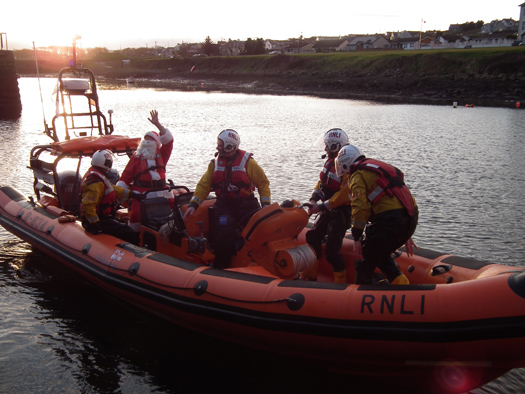Displaying items by tag: Hoax call
Santa Claus Delayed by Hoax Lifeboat Call
#SANTA – The arrival of Santa Claus to Mullaghmore Pier by Bundoran RNLI Lifeboat on Sunday afternoon was delayed due to a hoax distress call received to Malin Head Coast Guard.
As the four Bundoran Lifeboat crew were about to embark on their trip to Mullaghmore, they were diverted and tasked to an alleged incident in Donegal Town where, following a phone call to the Coast Guard at Malin Head, it was believed that four people were in an upturned boat near the quay in the town.
Santa afloat in an RNLI RIB
Bundoran RNLI Lifeboat sped to the scene. The Rescue 118 Helicopter was also tasked from its base in Strandhill as were the Killybegs Coast Guard. As the rescue services reached the scene the call was declared a hoax and they were stood down. Speaking about the incident, Bundoran RNLI Lifeboat Deputy Launching Authority Patrick O'Doherty commented 'it's sad in this day that people still get a kick out of making hoax calls to the rescue services – not one but three services were tasked on this occasion making them all unavailable should a real call for a real emergency have come in. The Gardai have been informed about this and will no doubt make their own enquiries.'
Following the incident the Bundoran Lifeboat crew carried on to their original destination of Mullaghmore Pier where they joined in the fun with Santa and the boys and girls of the area. Santa was then zipped into his lifejacket, boarded the lifeboat and was waved off from the pier by the assembled crowd. Just before he got on the lifeboat Santa said 'I'd like to thank the hardworking volunteer crew of Bundoran RNLI Lifeboat. Their work to save lives at sea is to be applauded and I know that I will be in safe hands on Christmas Eve should there be an emergency with the sleigh as I fly over the area'.






























































